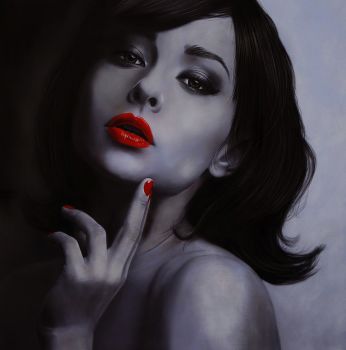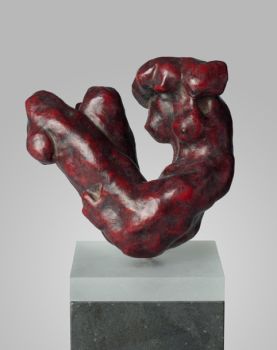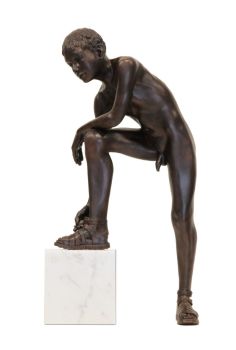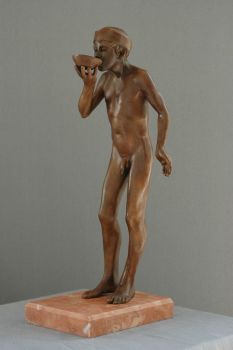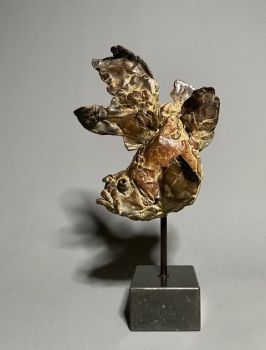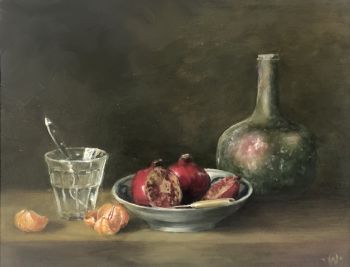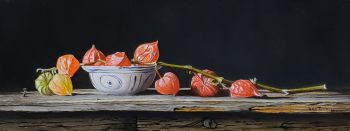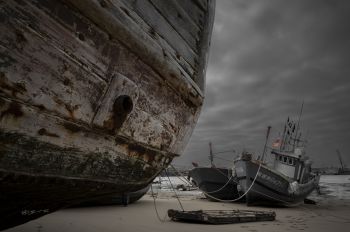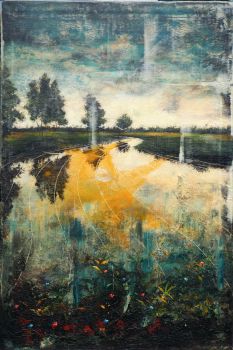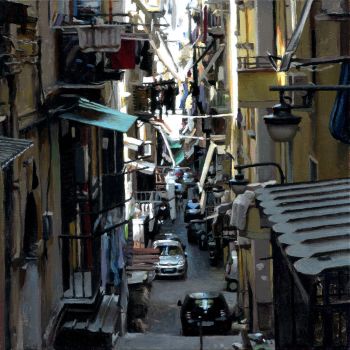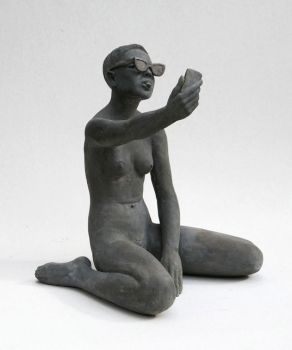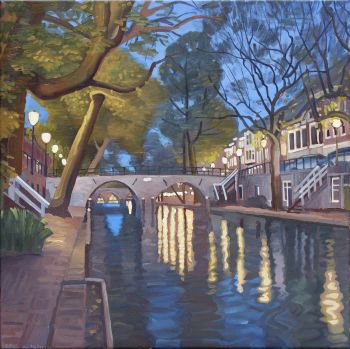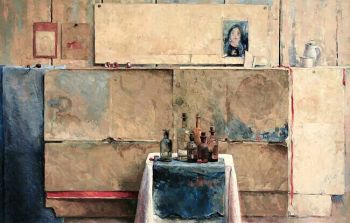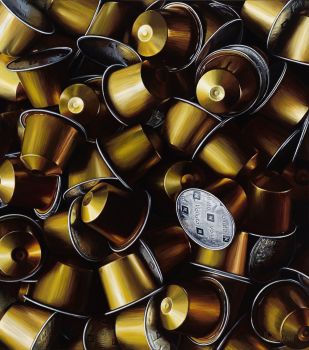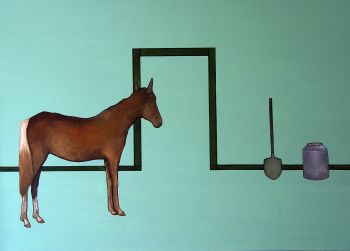The stunning reality of photo or hyperrealism in art
Photorealism, often referred to as hyperrealism, is an art movement that emerged in the 1960s and 1970s. Although this art form also received some criticism in the early days because it apparently focused too much on the masses, it has grown into an important art form today. In this article we describe, among other things, what photo or hyperrealism exactly is, how this art movement originated, what the most important characteristics are and where you can best go to buy this art form.
What exactly is photorealism or hyperrealism?
With photorealism or hyperrealism, artists try to imitate reality as accurately and in detail as possible by means of photography.
The artist works carefully to achieve a great effect and to omit any 'spontaneity', which is the characteristic of, for example, abstract expressionism and minimalism.
Once the original photograph has been developed (usually on a photographic slide), the artist systematically transfers the image from the photographic slide to canvas. Usually this is done by projecting the slide onto the canvas or using traditional grid techniques.
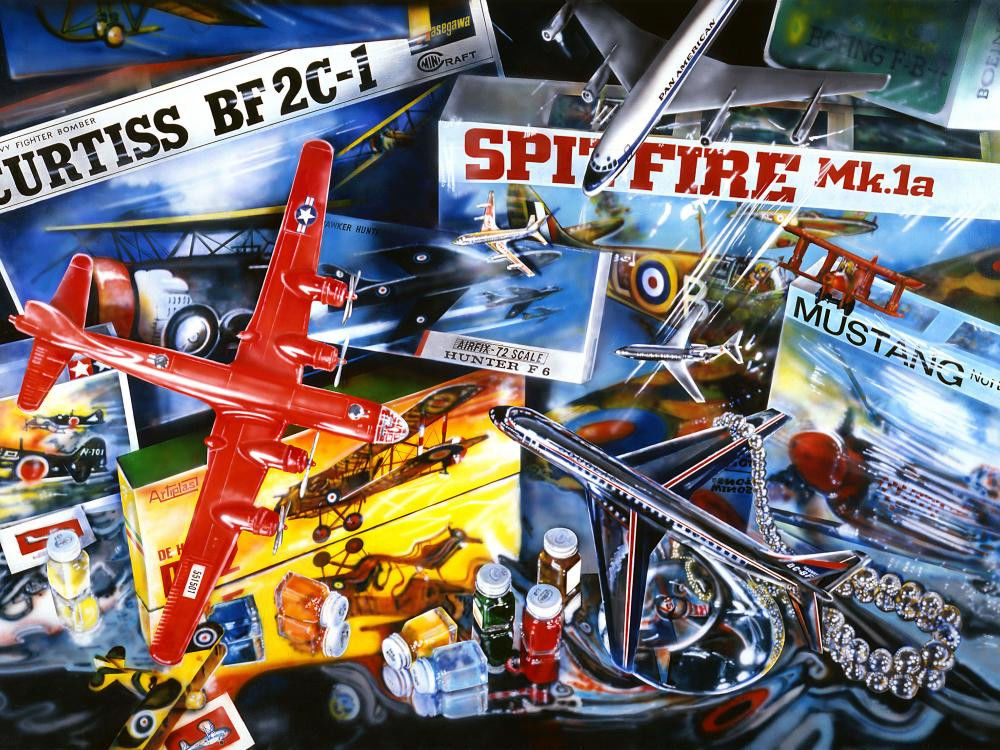 Photorealistic or hyperrealistic art by Audrey Flack, Spitfire, 1973
Photorealistic or hyperrealistic art by Audrey Flack, Spitfire, 1973
What are the characteristics of photo or hyper-realistic art?
Photorealism or hyper-realism, then, is a style of visual art that deals with the technical ability to impress viewers by making images appear "more real than real" by displaying often minute details and bright colors.
Similar to pop art, photorealism often focuses on images associated with consumer culture.
 Photorealistic or hyperrealistic art by Alyssa Monks
Photorealistic or hyperrealistic art by Alyssa Monks
How did Photo or Hyperrealism originate?
The word Photorealism was coined by Louis K. Meisel in 1969 and first appeared in 1970 in the Whitney Museum catalog for the exhibition “Twenty-two Realists”.
Two years later, Louis K. developed a five-point definition at the request of Stuart M. Speiser, who had commissioned a large collection of works by the Photorealists.
This eventually grew into a traveling show known as Photo-Realism 1973. The Stuart M. Speiser Collection was donated to the Smithsonian Museum of Art in 1978.
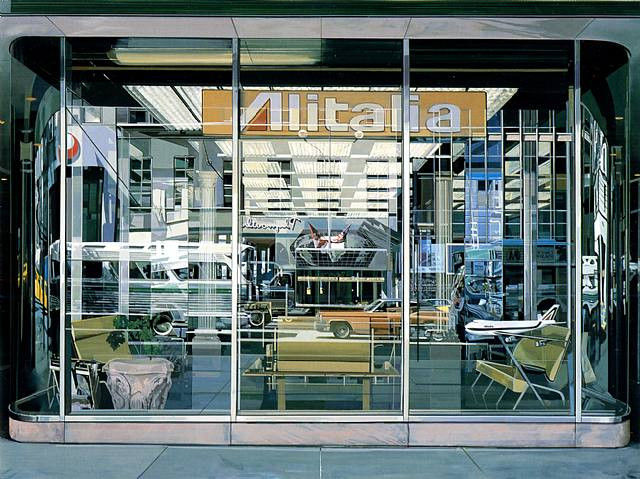 Photorealistic painting from the Stuart M. Speiser Collection: “Alitalia” by Richard Estes, 1973
Photorealistic painting from the Stuart M. Speiser Collection: “Alitalia” by Richard Estes, 1973
Photorealism or hyperrealism was thus primarily an American art movement, gaining momentum in the late 1960s and 1970s as a reaction against Abstract Expressionism. It is also sometimes referred to as superrealism, new or contemporary realism, sharp realism or focus realism.
Characteristics of photo or hyperrealism
Photorealism also emphasizes the importance of technique and skill, with many artists spending countless hours meticulously depicting every detail of their subjects.
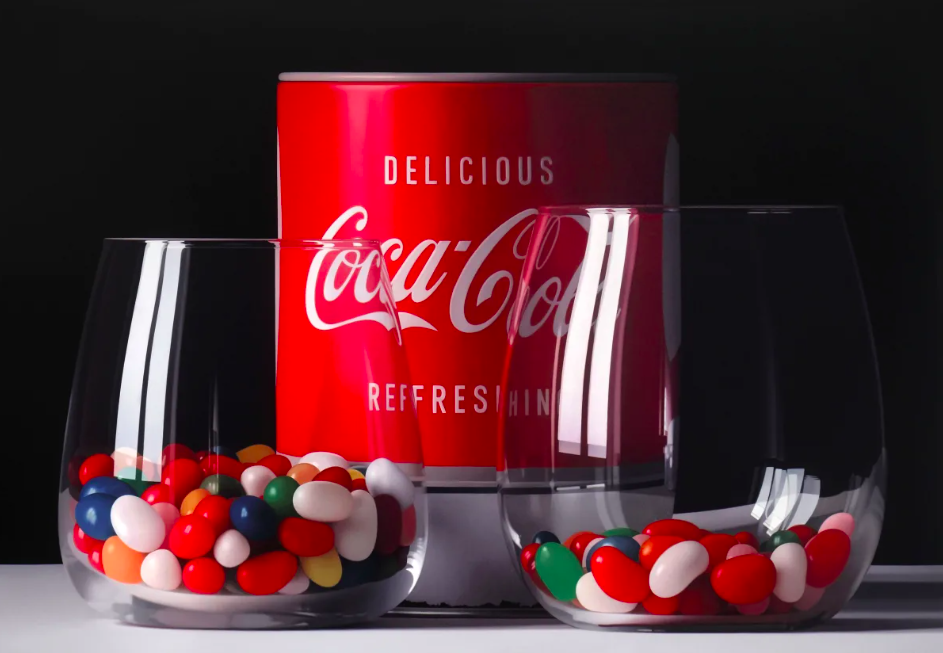 Photorealistic or hyperrealistic artwork by Pedro Campos
Photorealistic or hyperrealistic artwork by Pedro Campos
This can be seen in the use of techniques such as airbrushing and meticulous brushwork, which allowed artists to create works of art that were almost indistinguishable from photographs.
Photorealistic painting cannot exist without the photo. In photorealism, change and movement must be frozen in time, which must then be accurately represented by the artist.
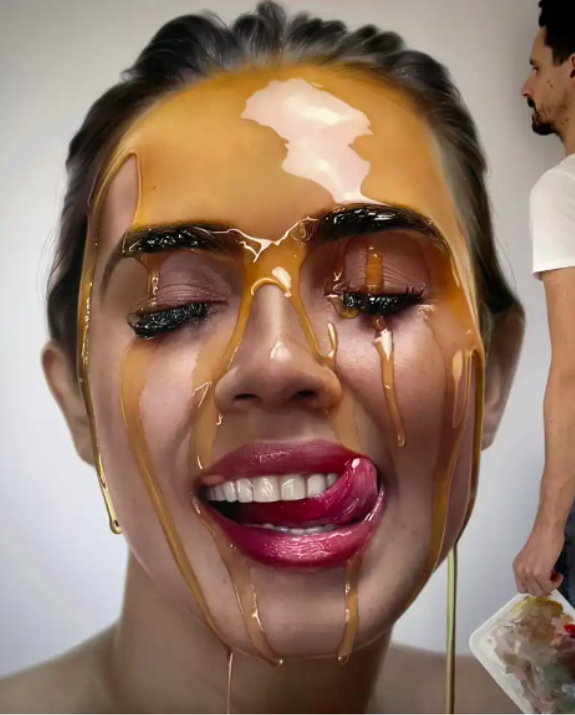 Hyperrealism by Fabiano Millani, 2021
Hyperrealism by Fabiano Millani, 2021
Contribution of photo or hyperrealism to art
One of photorealism's most important contributions to art is its emphasis on using photographic images as source material. Photorealistic artists try to create artworks that are as realistic as possible.
They often use photos as a starting point for their work. This allows them to capture a level of detail and precision virtually impossible with traditional forms of painting.
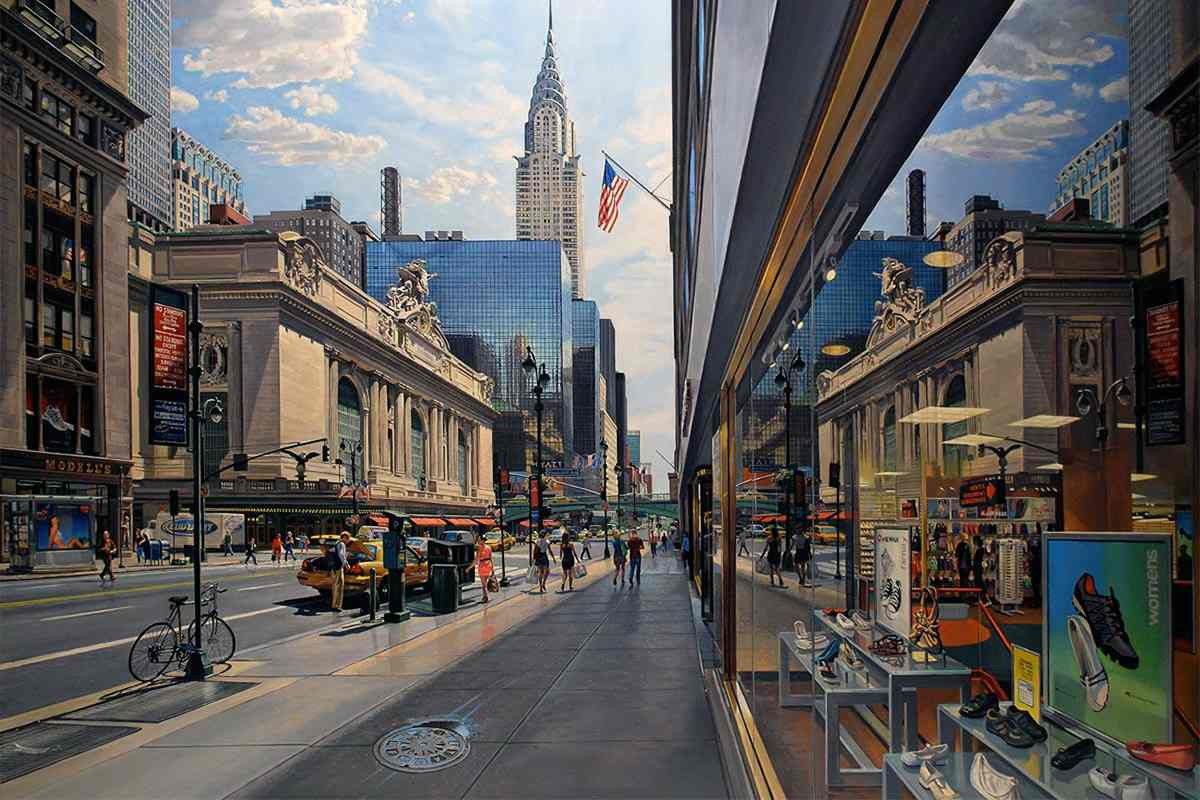 Photorealistic painting 'Grand Central', by Robert Neffson, 2009
Photorealistic painting 'Grand Central', by Robert Neffson, 2009
Another important contribution of photorealism to art was its focus on the relationship between art and technology. Photorealism embraced the use of technology, especially the camera, as a tool for creating art.
This challenged the traditional idea of art as a purely manual and creative process, and emphasized the importance of technology in the artistic process.
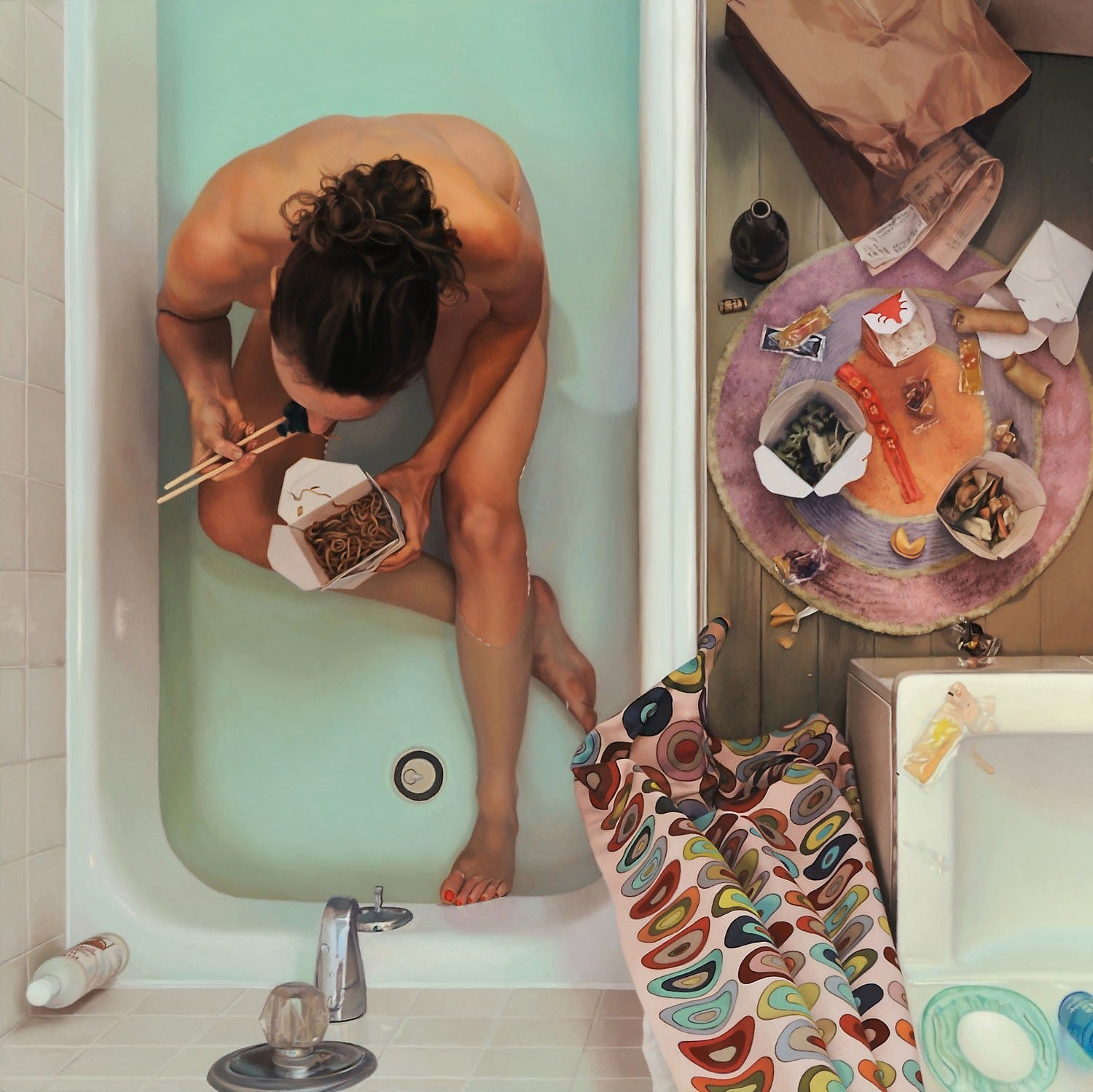 Photorealistic or hyperrealistic artwork by Lee Price
Photorealistic or hyperrealistic artwork by Lee Price
Minor difference between Photorealism and Hyperrealism
Photorealism also played an important role in the development of new artistic genres and styles. If we are very precise, photorealism paved the way for the development of hyperrealism, a slightly more 'exaggerated' form of photorealism.
The use of hyperrealistic elements at a level of detail and color creates almost 'hyperrealistic' works of art that are almost 'surrealistic' or hyperrealistic art.
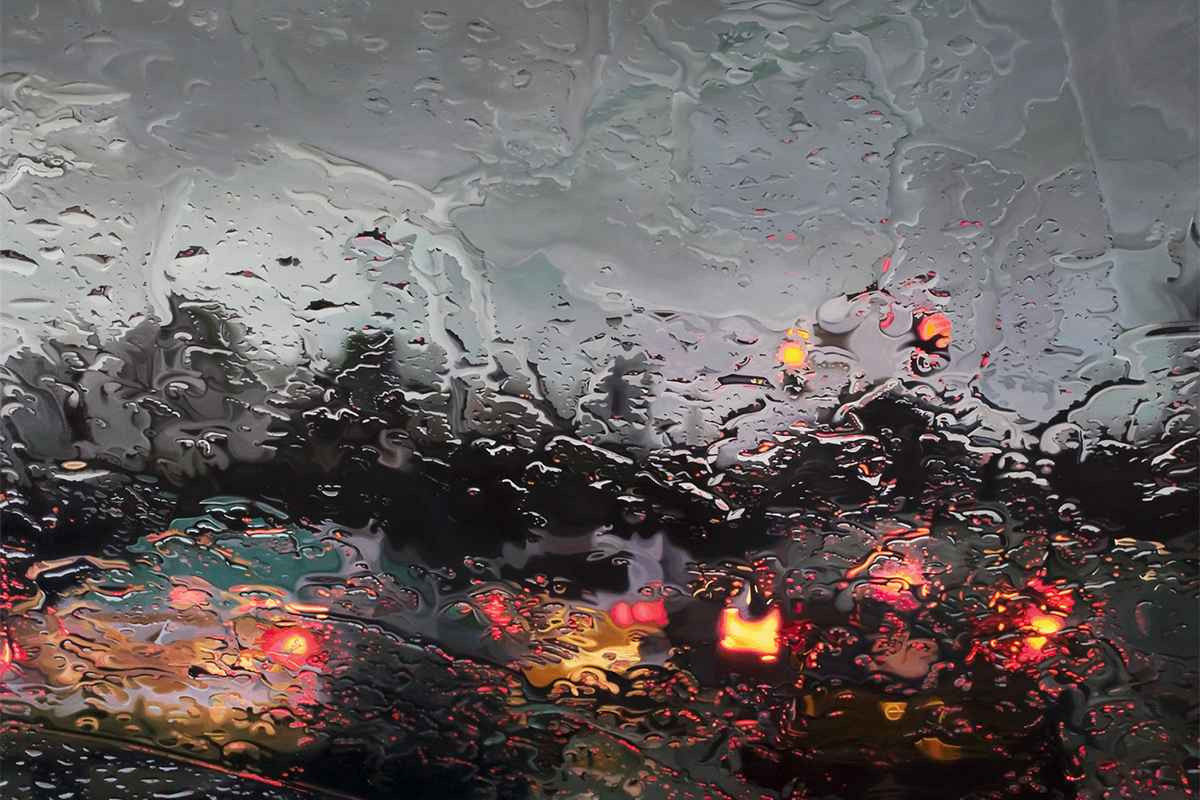 Hyper-realistic art, against the abstract by Gregory Thielker, Under the unwinding sky
Hyper-realistic art, against the abstract by Gregory Thielker, Under the unwinding sky
Important artists of photo or hyperrealism
There are many talented artists within photorealism or hyperrealism, the 3 artists below are just a selection of some influential names.
Chuck Close: Chuck Close is an American artist known for his detailed portraits. He uses photographic techniques to create his works and achieves a remarkable degree of realism.
Close's work can be seen in several major museums around the world.
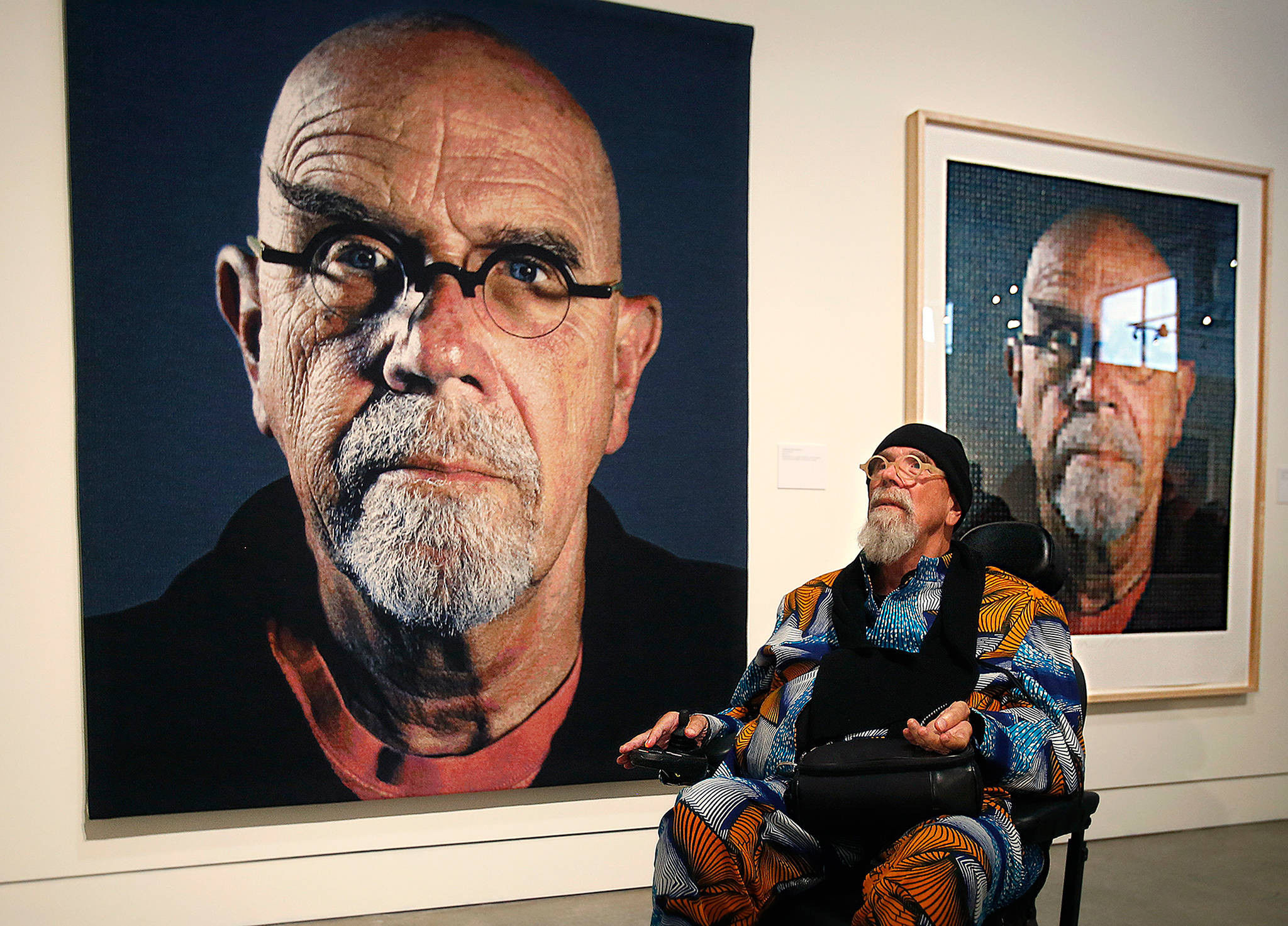 Photorealist Chuck Close, later in life for one of his self-portraits
Photorealist Chuck Close, later in life for one of his self-portraits
Richard Estes: Richard Estes is an American artist who is considered one of the founders of photorealism. He paints cityscapes and everyday scenes with incredibly precise detail.
Estes' works are often stunningly realistic and are characterized by the reflections and reflections he so carefully captures.
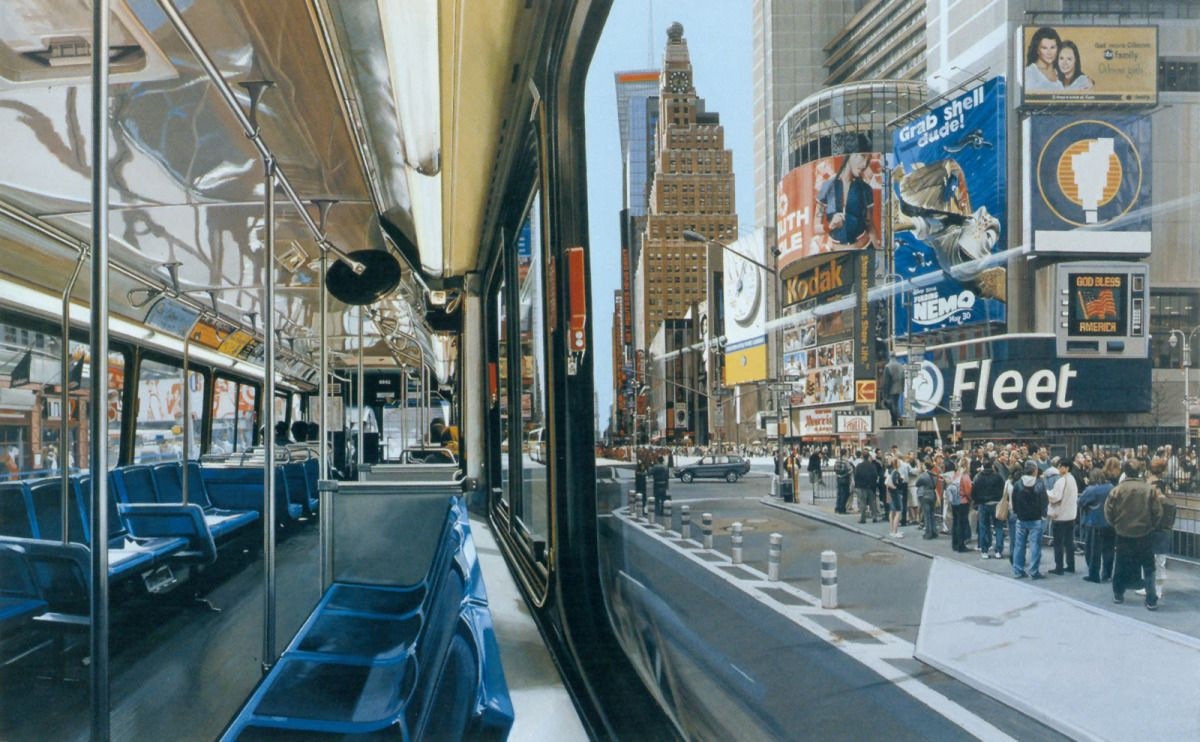 A Typical Photorealistic or Hyperrealistic Painting Richard Estes, New York, NY (February 12, 2015)
A Typical Photorealistic or Hyperrealistic Painting Richard Estes, New York, NY (February 12, 2015)
Audrey Flack: Audrey Flack is an American artist and pioneer of photorealistic painting. She is best known for her still lifes and symbolic compositions.
Flack combines traditional painting techniques with photographic elements to achieve an exceptional level of detail and realism.
Her work has contributed to the recognition and popularity of photorealism as an art form.
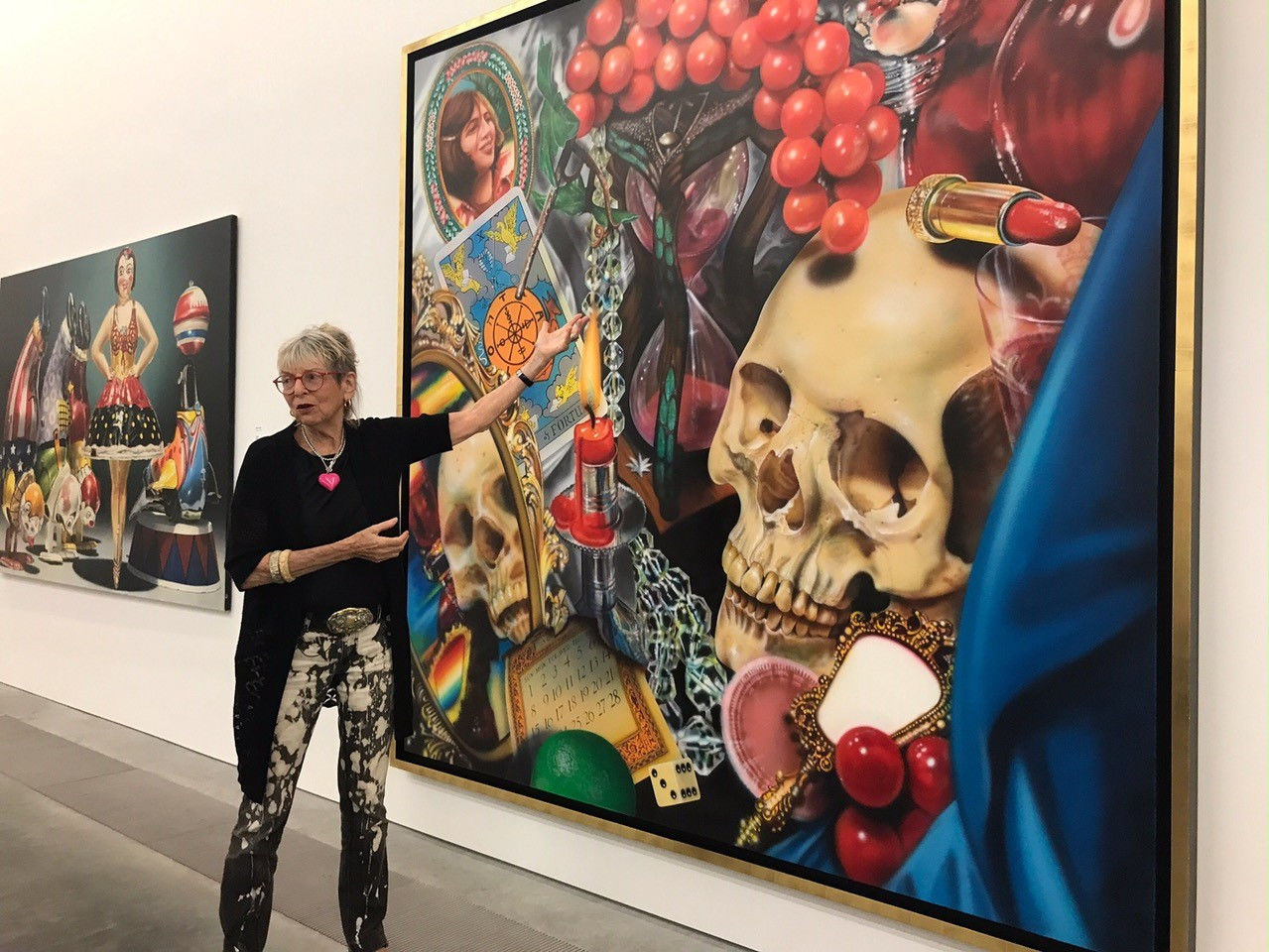 Photorealist Audrey Flack for her 'heel of fortune' painting
Photorealist Audrey Flack for her 'heel of fortune' painting
Influence of photo and hyperrealism on sculpture
Photorealism has also impacted the world of sculpture, leading some artists to take a new approach to their craft.
By capturing detailed elements and realistic textures, sculptors can create works that blur the line between art and reality.
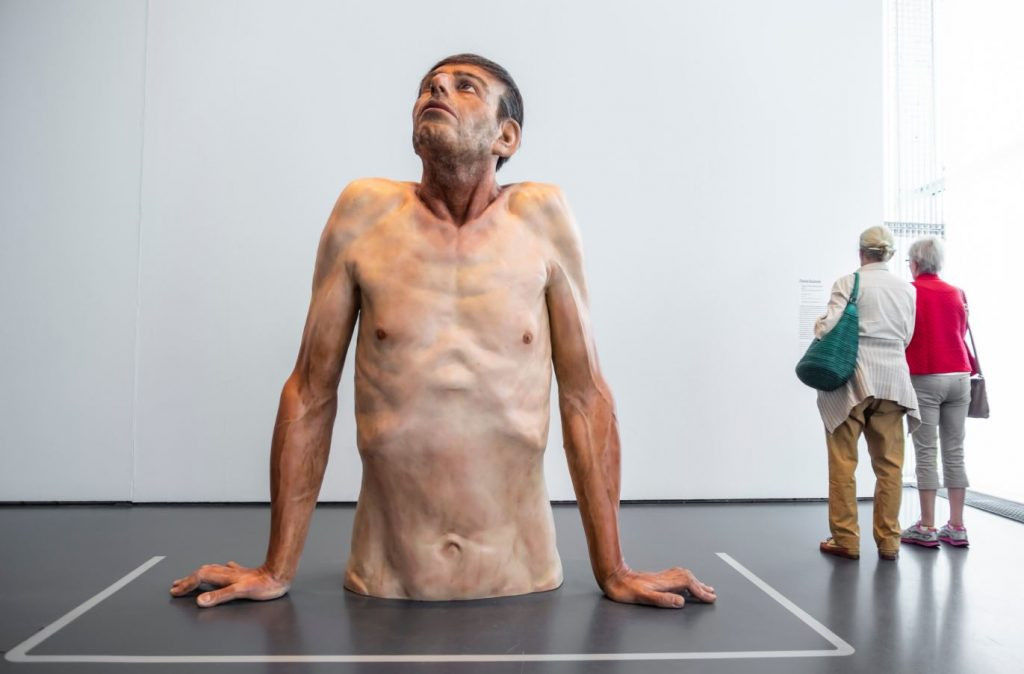 Hyperrealistic sculpture by Zharko Basheski, Ordinary Man, 2009-10
Hyperrealistic sculpture by Zharko Basheski, Ordinary Man, 2009-10
The heightened level of accuracy and precision allows viewers to become involved with the sculptures on a deeper level, while experiencing the tangible beauty of the artwork in a remarkably realistic way.
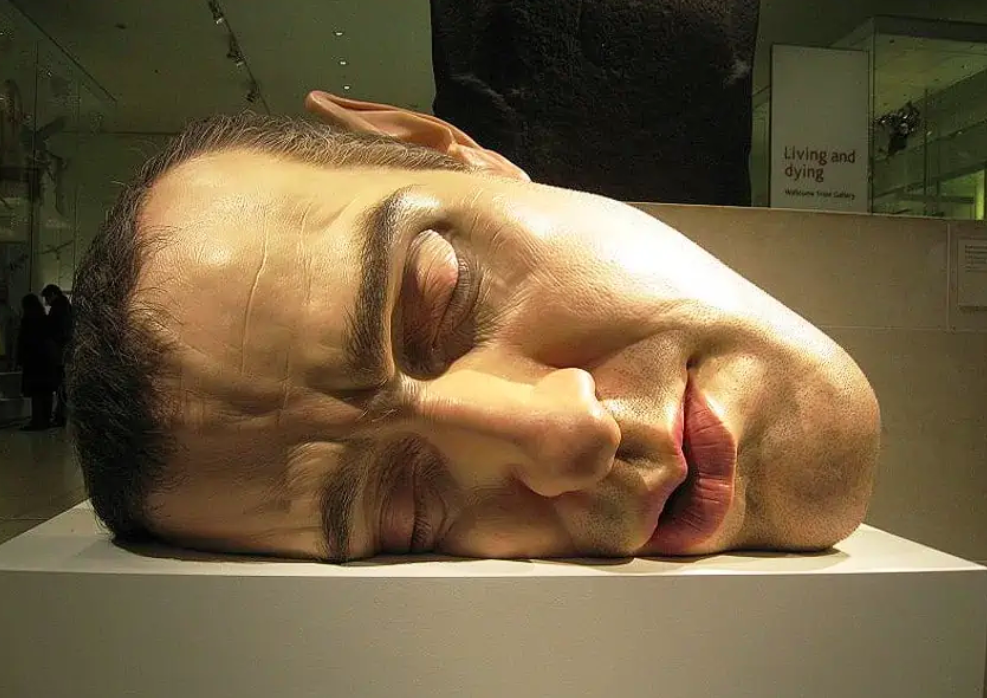 Hyper-realistic artwork by Ron Mueck, Mask II (2001 - 2002), believed to be a self-portrait
Hyper-realistic artwork by Ron Mueck, Mask II (2001 - 2002), believed to be a self-portrait
Where is the best place to buy photo or hyper-realistic art?
If you want to buy original photo or hyper-realistic art, it is important to know that the artwork is real and has a good provenance.
At Gallerease we only sell curated art from renowned galleries and art dealers. For our online overview of available photo and hyper-realistic artworks, such as paintings and sculptures see also the following link.
*Image at the very top is of a large Ohio painting by Dennis Wojtkiewicz of fruit that looks stunningly real



